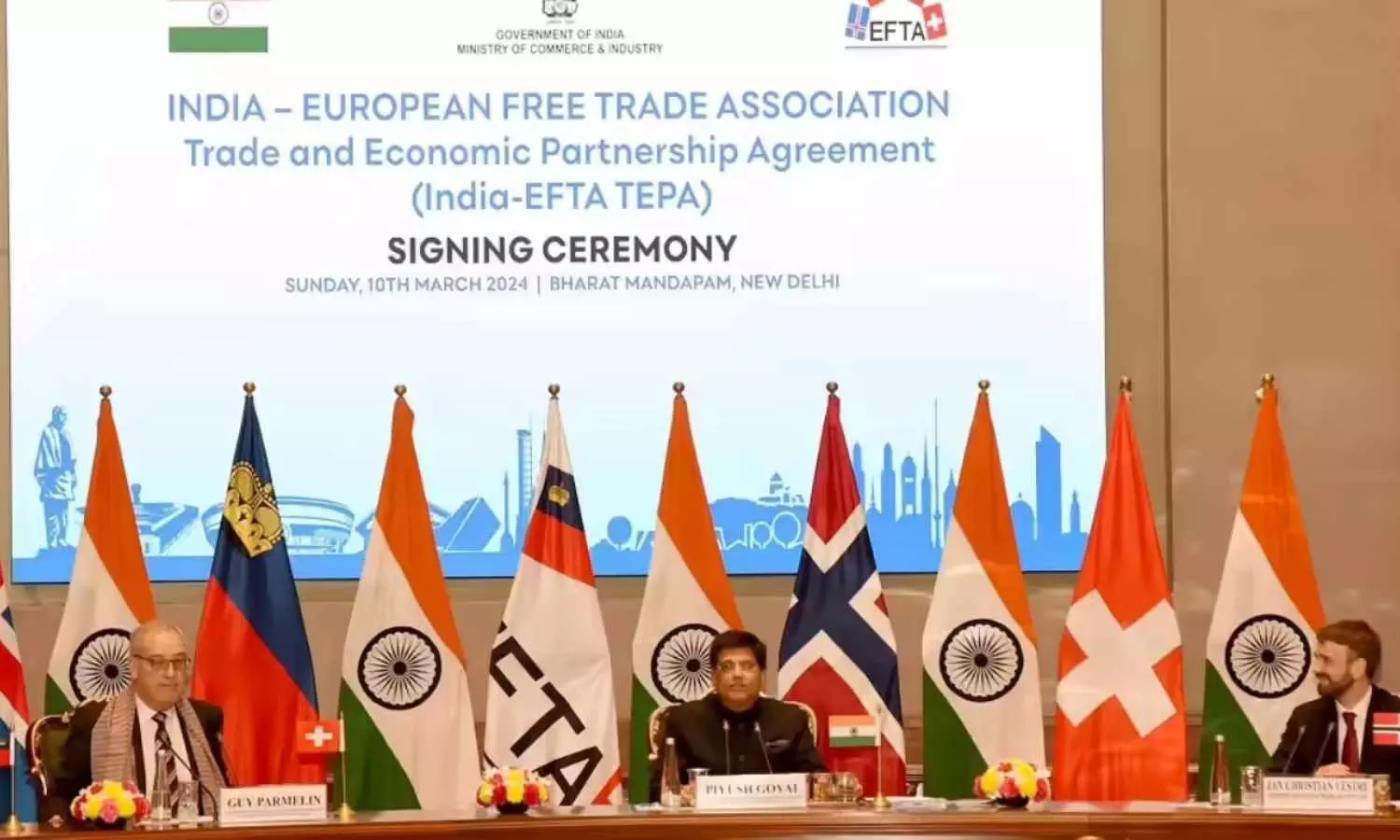Importance of TEPA with EFTA nations
India’s trade agreement with EFTA (Iceland, Liechtenstein, Norway, Switzerland) comes into force on October 1, 2025, securing $100 billion in investment and aiming to create one million jobs. TEPA offers tariff reductions, market access for Indian exports, and growth opportunities in agriculture, textiles, gems, and packaged foods.
Importance of TEPA with EFTA nations

India’s trade pact with the European Free Trade Association (EFTA), which includes Iceland, Liechtenstein, Norway, and Switzerland, has officially come into force on October 1, 2025.
A key aspect of TEPA is the long-term investment pledge. The four EFTA nations have committed to invest US$100 billion in India over the next 15 years with the goal of creating one million jobs. The investment will be implemented in two phases: US$50 billion during the first decade and another US$50 billion in the following five years.
TEPA's importance lies in boosting trade and investment, securing USD 100 billion in EFTA investment, generating one million jobs, and creating market access for Indian farmers, MSMEs, and exporters by eliminating tariffs on many industrial products. It establishes stable trade frameworks, promotes value-chain integration, facilitates services trade, and features an EFTA Desk for investment facilitation and a commitment to intellectual property protection.
TEPA introduces a carefully structured framework for tariff reductions. EFTA has extended concessions on 92.2 percent of its tariff lines, covering nearly 99.6 percent of India’s exports, which include non-agricultural goods and processed agricultural products. India, in turn, has offered concessions on 82.7 percent of tariff lines, covering 95.3 percent of EFTA exports, though gold – EFTA’s largest export to India – remains outside the scope of effective duty changes. In a key gain for India, basmati and non-basmati rice will receive duty-free access to EFTA markets without reciprocity.
India exported $130 million worth of textiles and clothing to EFTA in 2024. Compared to India’s total global exports of $36.71 billion, the EFTA market still has room to grow. TEPA’s tariff cuts make it easier for India to expand in this sector.
Indian gems and jewellery already enter EFTA markets duty-free, and TEPA keeps this advantage.
There is a big opportunity for biscuits, chocolates, confectionery, malt extracts, sauces, and other packaged foods.
Removing tariffs makes Indian rice more competitive compared to Italy, Thailand, and Pakistan.
The TEPA harnesses the “Power of Five (Panch)”, clarifying roles and complementarities. India brings scale, demand and skilled talent. Switzerland brings precision manufacturing, finance and capital goods. Norway brings maritime competence and clean energy depth. Iceland brings niche clean-tech and digital ingenuity. Liechtenstein brings high-value manufacturing and specialized engineering. This partnership would strive to compound trade, investment and technology flows over the next two to three decades.
The Prosperity Summit celebrated TEPA as a fair, mutually beneficial and balanced framework that connects India’s growth momentum to European markets. It sets a results-first agenda backed by clear principles, defined roles, and an execution pathway, aimed at translating market access and investments for creation of high-quality jobs.
If implemented effectively, TEPA has the potential to be a game-changer. It could unlock significant investment opportunities, boost exports, and create large-scale employment. For maximum impact, India will need to diversify its export basket, leverage EFTA expertise in clean technologies and innovation, and balance IP obligations with public health needs. Aligning TEPA outcomes with the ongoing India-EU FTA negotiations, expected to conclude in 2025, will also be essential for building resilient supply chains and overcoming non-tariff barriers.

